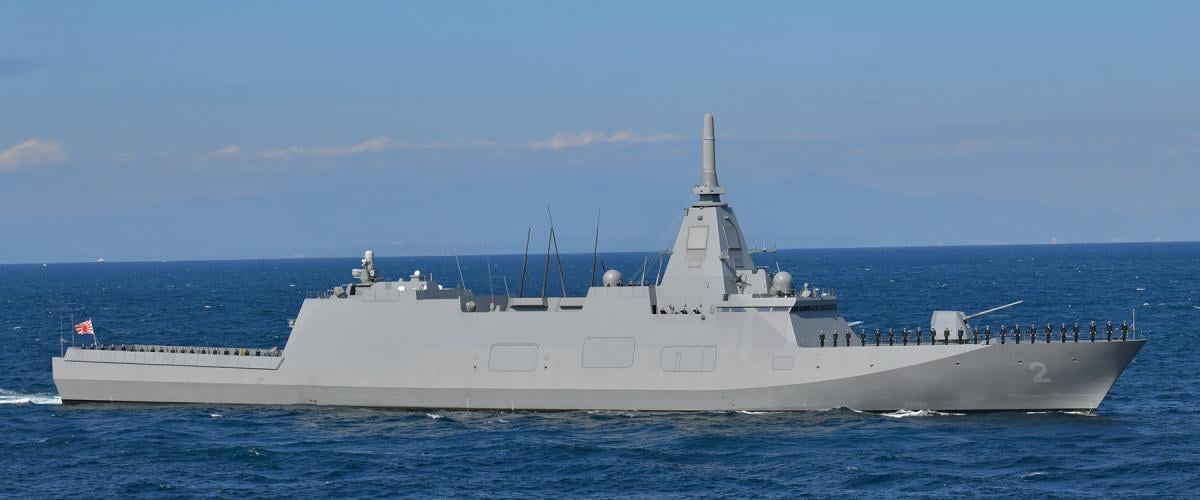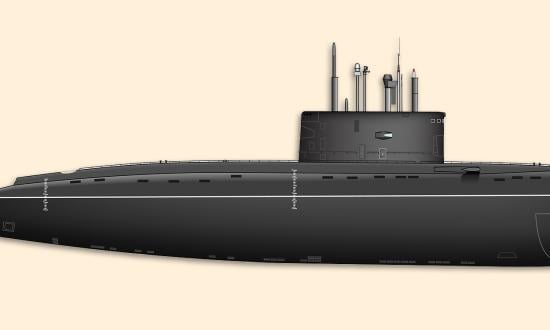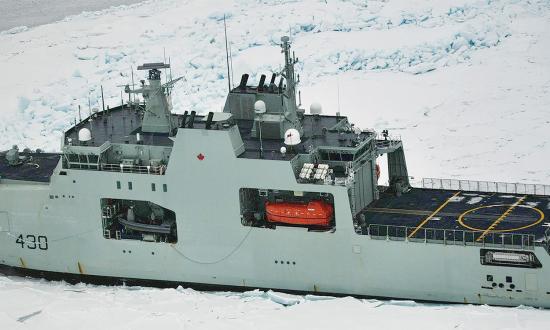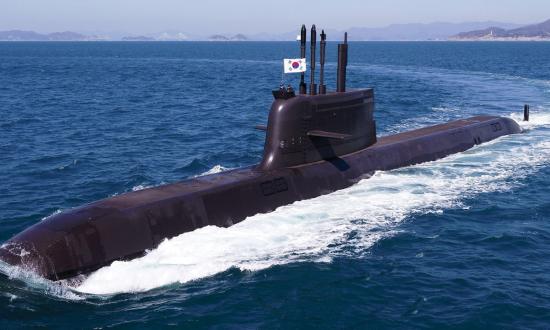Japan’s high-technology Mogami-class frigates seek a delicate balance that reduces cost and crew size while providing a modest solution for 21st-century requirements. Previously known as 30DX, and later 30FFM, the multimission program was announced in August 2017. The first two ships were ordered in 2018 and cost significantly less than $500 million each, with reports estimating a price tag between $370 million and $410 million per frigate.
The initial warships, the Mogami and Kumano, are numbered FFM-1 and FFM-2 and were laid down in fall 2019. The Mogami was built at Mitsubishi Heavy Industries in Nagasaki along with most of her subsequent sisters. Construction of second ship Kumano (pictured) took place at Mitsui Engineering & Shipbuilding in Tamano. Despite being second in line, the Kumano was launched first on 19 November 2020 and commissioned on 22 March 2022. Class namesake Mogami suffered propulsion problems and was launched belatedly in March 2021 and commissioned on 28 April 2022.
The third and fourth frigates, the Noshiro and Mikuma, were commissioned in December 2022 and March 2023, respectively. The fifth and sixth frigates, the Yahagi and Agano, were launched in June and December 2022 for service in the near future. Twelve 30FFM frigates are eventually expected in the fleet, down from the original 22 that had been planned. The Japan Maritime Self-Defense Force (JMSDF) instead intends to invest in a dozen more advanced frigates for the future.
Displacing 3,900 tons standard and 5,500 tons fully loaded, the Mogami class is 435-feet long with a 53-foot beam. The warships incorporate numerous signature reduction measures to enhance stealth. The frigates carry a wide range of sensors, including an Active Electronically Scanned Array (AESA) radar in an integrated mast, electro-optic and infrared detection systems, towed-array and variable-depth sonars for submarine hunting, and a hull-mounted sonar for mine-hunting.
The frigates have a flight deck and hangar for a single SH-60 Seahawk naval helicopter or unmanned air systems. Unmanned surface vehicles and unmanned underwater vehicles can be employed via a stern ramp beneath the flight deck, which also can be useful for mine warfare and other missions.
An 11-round SeaRAM point-defense launcher for Rolling Airframe Missiles can be found atop the helicopter hangar, along with space for eight of Japan’s new 250-mile-range Type 17 antiship cruise missiles. One Mk 45 Mod 4 5-inch gun is mounted forward, while .50-caliber remotely operated guns and lightweight torpedo launchers round out their armament. The frigates are currently fitted for, but not equipped with, a 16-cell Mk 41 vertical launching system (VLS), which will be installed in the future. The VLS will likely contain quad-packed Evolved Sea Sparrow Missiles for medium-range air defense and vertical launch antisubmarine rockets for antisubmarine warfare.
The high degree of automation enables a reduced crew size of only 90 personnel. Propulsion consists of a combined diesel and gas system incorporating one gas turbine and two diesels. Two shafts with controllable pitch propellers provide a top speed of more than 30 knots.






